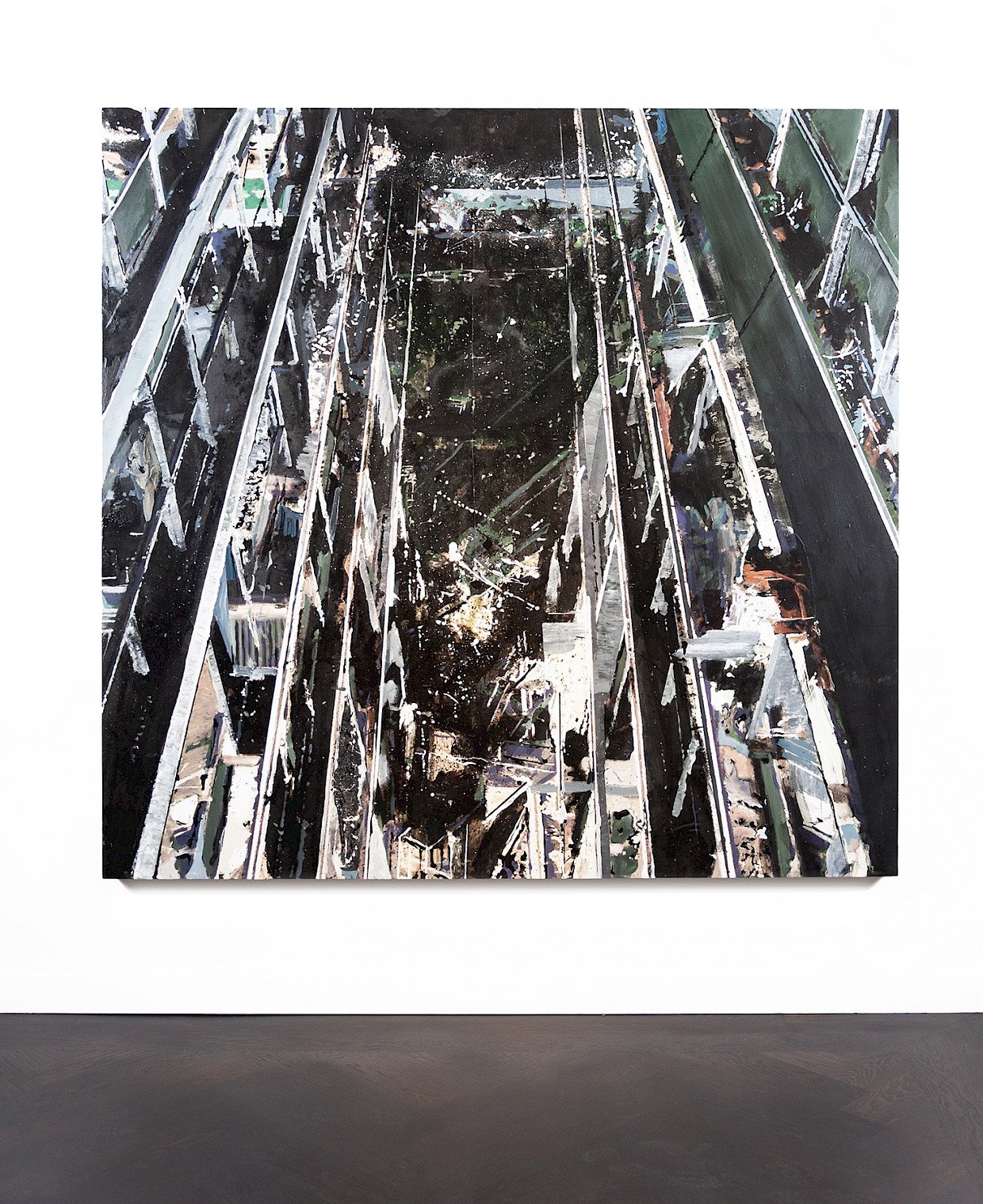

Tjebbe Beekman (b. 1972)
Trust

The painting Trust by Tjebbe Beekman, an artist born and raised in Leiden, was created at the end of his residency at the Rijksakademie (State Academy of Fine Arts) in Amsterdam, a period in which the metropolitan environment was his main source of inspiration. This made him a worthy successor to impressionist George Hendrik Breitner, whom he admired and who, together with several fellow painters at the same Rijksakademie, depicted modern city life at the end of the 19th century, a novelty that wasn’t well-received by the majority of the public at the time.
The enormous depth effects in Trust are one of the first things that immediately stand out. It is as if one looks down between two office buildings. Beekman’s apparently smooth, expressive way of painting affects the rigidly angular architecture of the building, creating a distorted image. However, it’s certainly not a depiction of a demolished building, as sometimes suggested by visitors to A&O Shearman. In fact, it’s an office in full swing, of which Beekman took photographs while standing on a nearby building at dusk. The computer screens that were still on at the time are scattered across the painting as green illuminated areas. Beekman often chose facades of modern (apartment) buildings that at first sight aren’t the prettiest, but whose rectilinear structure provided him with an interesting motif nevertheless.
Beekman, who like Breitner started at the Royal Academy of Art in The Hague, uses a working method that, though modern, is similar to his predecessor’s. For him, photography too forms the starting point from which his “impressionist” painted images arise. From the many photos he took during his extensive travels in and around Amsterdam, he compiles collages on the computer that serve as a foundation for his compositions. The main lines of that image construction are subsequently transferred onto the canvas, creating a relatively realistic copy of the computer image. However, by loosely applying many layers of paint and (transparent) varnish, which he often literally slides over the surface, he undermines a photorealistic image. Little of the original intention remains visible in the final result. Sometimes he even throws sand or strings through the paint because, as he says: “The painting should not become too controlled or rigid”. So, it’s not about making an aesthetic picture. The result is a wrought painting which one only suspects has been based on a photograph. As a result, Beekman’s impressive images generally balance on the edge of realism and total abstraction.
This work was part of his final presentation at the Rijksakademie, after which he continued to experiment freely. Although the great masters of the 19th century are never far away, in recent work we see a lot of influences from the great modernists of the 20th century.
